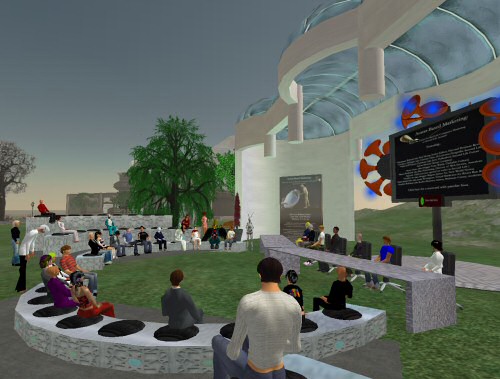Andrew McAfee followed David Weinberger in the keynote session at Enterprise 2.0.
McAfee coined the term Enterprise 2.0 a little over a year ago. In his presentation, he looked at the changes in the last year.
How are we doing with awareness?
Since the term was coined a little over a year ago, it has spread rapidly, finding it’s way into mainstream media and conferences like this.
The concept of social software is beginning to penetrate into corporations. This is accompanied by an awareness of the benefits of network effects as the usage increases.
Enterprises also are beginning to acknowledge the merits of freeform authoring. Users will create that which is useful to them. So, we must come to grips with the need to “get out the way” and let them do this.
One of the huge leaps forward in Enterprise 2.0 is the realization that the users should also create their own metadata. If we allow this to happen without imposing artificial structures, we will find that the information is organized in ways that reflect the users and their needs.
How about the technologies?
The toolkit is growing and overflowing with freeform, collaborative tools. Massive amounts of new offerings are being offered by both startups and established companies. There will be a winnowing out as users select the best of the set and others fall by the wayside. Messy, but good.
On the other hand, the new applications and platforms are not always as easy to use as they must be. And, the new technologies must take into account existing applications, such as email. Email is ubiquitous and meets a functional need. Enterprise 2.0 applications will be more quickly embraced if they integrate with existing applications like email.
How are we communicating results to decision makers inside organizations? We’re not doing so well with this. Case studies are still relatively rare. To build credibility inside the corporation, it will be necessary to build up a broader set of case studies, benchmarks and stories that describe the success of these tools.
McAfee cautions against attempting to justify the adoption of the tools soley in terms of ROI. Early estimates are likely to be contentious. He instead suggests that the focus should be on telling the story of what they do. This will appeal to decision makers who make their judgments on factors beyond ROI.
He concluded his presentation with a proposal to create a repository of Enterprise 2.0 efforts. This could be generated by the Enterprise 2.0 community through a Wiki. And it will provide a map of the evolution of Enterprise 2.0 that advocates and decision makers can draw on.


 Registration
Registration  Blog readers continue to be treated to an unusual peek behind the scenes in the development of a web 2.0 company.
Blog readers continue to be treated to an unusual peek behind the scenes in the development of a web 2.0 company.

 Shel Israel has posted a
Shel Israel has posted a  Munjal Shah, the CEO of
Munjal Shah, the CEO of 